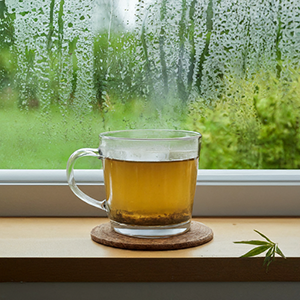Contents
Hemp agrimony must not be mistaken for Sticklewort, also called Greek agrimony, which belongs to another botanical family and has different properties.

Hemp Agrimony Scientific Facts
- Scientific Name: Eupatorium cannabinum L.
- French: Eupatoire.
- Spanish: Eupatorio.
- Environment: Wetlands and forests all over Europe and America.
- Description: The vibrant plant of the Compositae family grows up to 1.5 m high, with pink, white, or light blue flowers growing in flower heads. Its root has a rancid smell, and its leaves taste sour.
- Parts of the plant used medicinally: Leaves and fresh roots.
Hemp Agrimony Benefits
The whole plant contains resin, a bitter substance, tannin, and traces of essence. It has choleretic (increases bile secretion in the liver), depurative, antirheumatic, laxative, and expectorant properties. Hemp agrimony treats hepatic afflictions (hepatitis, cirrhosis), arthritis, rheumatic pain, bronchitis, colds, and a mild laxative. It has vulnerable properties in external applications: it heals infected wounds, ulcers, and skin bruises.
Warning
In high doses, it may provoke vomiting. Please do not use it for long periods; it can lead to toxicity.
How to use Hemp Agrimony

- Decoction with fifty grams of the sliced fresh root, or leaves, per liter of water. Drink two or three cups a day.
- Compresses soaked in the above decoction are applied to the afflicted skin area.
American Species
There are several Eupatorium species in America:
- Eupatorium collinum D.C. is cultivated to use its leaves as a substitute for hops.
- Eupatorium perfoliatum L. This species grows in North America and is used as a laxative, sudorific, and febrifuge against influenza and colds. Its common name is boneset.
- Eupatorium purpureum L. is commonly called Queen of the Meadow. This is a plant used by American natives as a diuretic and stimulating.
- Eupatorium staechadosmum Hance. Native to Indochina but cultivated in tropical America because of the medicinal properties of its leaves.
- Eupatorium triplinerve Vahl. = Eupatorium ayapana Vent. Comes from the Asian and American tropics. Its leaves render a stimulant infusion. In some places, it is known as Amazon tea.

Boneset
Boneset is mainly used to treat severe fevers, primarily intermittent fevers. When taken as a warm infusion (drink four to five cups while in bed to stimulate sweating), its primary use is for bronchitis, catarrh, and the flu. Boneset also helps to relieve pains and aches that are fever-induced. It is a decongestant that helps calm the body, increase sweat, reduce fever, and loosen phlegm. In Colonial times, an American Indian became well-known for curing typhoid with this plant. Decades later, boneset was given his name: Joe Pye Weed.
Boneset tea is made with an ounce of herb to a pint of water and steeped for ten minutes. One-half cup can be taken three times daily. When the tea is cold, it becomes a tonic stimulant and mild laxative. However, when taken warm, it is emetic and diaphoretic; it can break up the common cold, flu, and intermittent fever. Hot tea is cathartic and emetic and can be used as a form of sweating therapy, which can be done in four to five half-cup doses while in bed.
Infusion (tea): Steep for five to fifteen minutes. Take three ounces three times a day. Tincture: Take ten to forty drops three times a day. Fluid Extract: Take ½ to one teaspoon three times a day. Powder: Take four to ten #0 capsules (20 to 60 grains) thrice daily.
DISCLAIMER: All content on this website is presented solely for educational and informational objectives. Do not rely on the information provided as a replacement for advice, diagnosis, or treatment from a qualified medical expert. If you are pregnant, nursing, or have any preexisting medical concerns, talk to your doctor before using any herbal or natural medicines.
REFERENCES
- George D. Pamplona-Roger, M.D. “Encyclopedia of Medicinal Plants.” George D. Pamplona-Roger, M.D. Encyclopedia of Medicinal Plants. Ed. Francesc X. Gelabert. Vols. 1 San Fernando de Henares: Editorial Safeliz, 2000. 388. Print.
- Vance Ferrell Harold M. Cherne, M.D. The Natural Remedies Encyclopedia [Book]. – Altamont, TN: Harvestime Books, 2010. – Vol. Seventh Edition: 7: pp. 147.
- PubMed: https://pubmed.ncbi.nlm.nih.gov/
- National Center for Complementary and Integrative Health: https://www.nccih.nih.gov/
